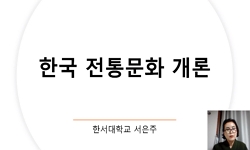The ceremony and ritual in religion is formalization of praise and hope for something having power beyond cognition or the sacred, and trying to escape from horror of awe. In ancient times, the sacred and great power was a phenomena of the nature, whi...
http://chineseinput.net/에서 pinyin(병음)방식으로 중국어를 변환할 수 있습니다.
변환된 중국어를 복사하여 사용하시면 됩니다.
- 中文 을 입력하시려면 zhongwen을 입력하시고 space를누르시면됩니다.
- 北京 을 입력하시려면 beijing을 입력하시고 space를 누르시면 됩니다.
https://www.riss.kr/link?id=A82705074
- 저자
- 발행기관
- 학술지명
- 권호사항
-
발행연도
2003
-
작성언어
Korean
- 주제어
-
KDC
220.1
-
등재정보
KCI등재
-
자료형태
학술저널
- 발행기관 URL
-
수록면
9-22(14쪽)
- 제공처
- 소장기관
-
0
상세조회 -
0
다운로드
부가정보
다국어 초록 (Multilingual Abstract)
The religious ceremony and ritual developed in various ways as human wisdom made progress. The religious form changed from primitive worship for nature, animism, ancestor worship, shamanism into modern diverse faith as Buddhism.
Today the ceremony and ritual in Korean Buddhism is based on the Pure land and esoteric Buddhism. Adding faith of Hwaum and Buphwa, it was mixed with mountain worship as Korean traditional faith, and taoism such as Chilsung faith.
Buddhist ritual begins with admiration of the Buddha and confession for oneself. It is <Yecham(禮參)> that is formalization of it. All Buddhist ceremony and ritual is included in it. It is easy to understand seeing the example of buddha worship which is being done morning and evening. Present Korean Buddhist worship follows the model of Jogye Order, yet it succeeded to the Seon sect, and becomes simple. Being simple, shamanism, faith of nature, and mountain faith which are included by people. Even in India and China, at the early ages, faith related with mysticism could not be denied. It was in China where the ceremony and ritual were formalized.
The ceremony and ritual in Pure land proceed with consistent admiration and confession. The most clearly essential of it is citing yeumbul-Namo Amita Buddha. Through Namo Amita Buddha, daily living is done by admiration of Amita Buddha, and reflection of
oneself who needs confession.
Amita Buddha expresses her compassion for sentient beings by promise of salvation all beings full of karma and daily living can be happy due to that promise. As such, people can be a practitioner of yeumbul, and basic mission of religion for creating human future can be achieved.
The ceremony and ritual in religion is formalization of praise and hope for something having power beyond cognition or the sacred, and trying to escape from horror of awe. In ancient times, the sacred and great power was a phenomena of the nature, which was most rough and aggressive. The religious rituals began at the time when primitive hunting period almost ended, considered to pray for satisfactory animal hunting and human safety.
The religious ceremony and ritual developed in various ways as human wisdom made progress. The religious form changed from primitive worship for nature, animism, ancestor worship, shamanism into modern diverse faith as Buddhism.
Today the ceremony and ritual in Korean Buddhism is based on the Pure land and esoteric Buddhism. Adding faith of Hwaum and Buphwa, it was mixed with mountain worship as Korean traditional faith, and taoism such as Chilsung faith.
Buddhist ritual begins with admiration of the Buddha and confession for oneself. It is <Yecham(禮參)> that is formalization of it. All Buddhist ceremony and ritual is included in it. It is easy to understand seeing the example of buddha worship which is being done morning and evening. Present Korean Buddhist worship follows the model of Jogye Order, yet it succeeded to the Seon sect, and becomes simple. Being simple, shamanism, faith of nature, and mountain faith which are included by people. Even in India and China, at the early ages, faith related with mysticism could not be denied. It was in China where the ceremony and ritual were formalized.
The ceremony and ritual in Pure land proceed with consistent admiration and confession. The most clearly essential of it is citing yeumbul-Namo Amita Buddha. Through Namo Amita Buddha, daily living is done by admiration of Amita Buddha, and reflection of
oneself who needs confession.
Amita Buddha expresses her compassion for sentient beings by promise of salvation all beings full of karma and daily living can be happy due to that promise. As such, people can be a practitioner of yeumbul, and basic mission of religion for creating human future can be achieved.
목차 (Table of Contents)
- Ⅰ. 緖論- 儀禮․儀式의 宗敎的意味
- Ⅱ. 人間과 宗敎의 관계
- III. 佛敎儀式의 起源과 展開
- IV. 韓國佛敎에 있어서의 儀禮․儀式
- V. 結論
- Ⅰ. 緖論- 儀禮․儀式의 宗敎的意味
- Ⅱ. 人間과 宗敎의 관계
- III. 佛敎儀式의 起源과 展開
- IV. 韓國佛敎에 있어서의 儀禮․儀式
- V. 結論
- 참고문헌
- ABSTRACT
동일학술지(권/호) 다른 논문
-
- 한국정토학회
- 이태원
- 2003
- KCI등재
-
- 한국정토학회
- 한보광
- 2003
- KCI등재
-
대승장엄경론(Mahāyānasūtrālaṃkāra)의 삼성설 연구
- 한국정토학회
- 김명우
- 2003
- KCI등재
-
- 한국정토학회
- 김광식
- 2003
- KCI등재





 eArticle
eArticle







